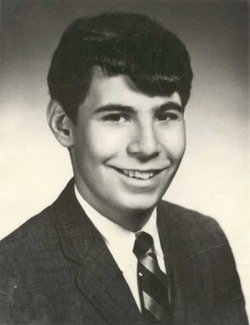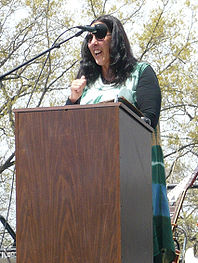
Opa-locka is a city in Miami-Dade County, Florida, United States. The city is part of the Miami metropolitan area of South Florida. As of the 2020 Census, the population was 16,463, up from 15,219 in 2010.

John Paul Filo is an American photographer whose picture of 14-year-old runaway Mary Ann Vecchio screaming while kneeling over the dead body of 20-year-old Jeffrey Miller, one of the victims of the Kent State shootings, won him the Pulitzer Prize in 1971. At the time, Filo was both a photojournalism student at Kent State University, and staffer of the Valley Daily News, which became the Valley News Dispatch and is now a satellite paper for the Greensburg Tribune-Review.

Jeffrey Glenn Miller was an American student at Kent State University in Kent, Ohio, who was killed by the Ohio Army National Guard in the Kent State shootings. He had been protesting against the invasion of Cambodia and the presence of the National Guard on the Kent State campus. National Guardsmen opened fire on a group of unarmed students, killing Miller and three others.

Sandra Lee "Sandy" Scheuer was a student at Kent State University in Kent, Ohio, when she was killed by Ohio National Guardsmen in the Kent State shootings.

Allison Beth Krause was a student at Kent State University and one of four unarmed students shot and killed by soldiers of the Ohio Army National Guard in the May 4, 1970 Kent State shootings in Kent, Ohio. The shootings occurred as students protested against both the invasion of Cambodia and the National Guard presence on campus.

William Knox Schroeder was a student at Kent State University, Ohio, when he was killed by Ohio National Guardsmen in the Kent State shootings.

Miami-Opa Locka Executive Airport is a joint civil-military airport located in Miami-Dade County, Florida 11 mi (18 km) north of downtown Miami. Part of the airport is in the city limits of Opa-locka. The National Plan of Integrated Airport Systems for 2011–2015 called it a general aviation reliever airport.

The Ohio National Guard comprises the Ohio Army National Guard and the Ohio Air National Guard. The commander-in-chief of the Ohio Army National Guard is the governor of the U.S. state of Ohio. If the Ohio Army National Guard is called to federal service, then the President of the United States becomes the commander-in-chief. The military commander of all forces in the State of Ohio is the Adjutant General, Major General John C. Harris, Jr. is responsible for the command of 17,000 members, preparedness and readiness, installation management, and budget of the Ohio National Guard. The current Assistant Adjutant General for Army, with responsibility for overseeing the Ohio Army National Guard training and operations, is Brigadier General Thomas E. Moore II. The current Assistant Adjutant General for Air is Major General James R. Camp with responsibility for overseeing the Ohio Air National Guard.

Jeanine McIntosh Menze is a United States Coast Guard officer. She holds the distinction of becoming the first black female in the U.S. Coast Guard to earn the Coast Guard Aviation designation.
Terrence Brooks Norman is a former Kent State University student and FBI informant whose alleged role in the Kent State shootings has been cloaked in mystery since the tragedy, which claimed the lives of four unarmed students at an anti-Vietnam War rally.

Monsignor Edward Pace High School is a Catholic secondary school in the Opa-locka North neighborhood of Miami Gardens, Florida. It was named a Blue Ribbon School in 2002 and one of the top 50 Catholic high schools in the country in 2004 and 2005 by the Catholic High School Honor Roll. Pace is a member of the National Catholic Educational Association (NCEA). This school is part of the Roman Catholic Archdiocese of Miami.

The Kent State shootings were the killing of four and wounding of nine unarmed college students by the Ohio National Guard on the Kent State University campus. The shootings took place on May 4, 1970, during a rally opposing the expanding involvement of the Vietnam War into Cambodia by United States military forces as well as protesting the National Guard presence on campus and the draft. Twenty-eight National Guard soldiers fired about 67 rounds over 13 seconds, killing four students and wounding nine others, one of whom suffered permanent paralysis. Students Allison Krause, 19, Jeffrey Glenn Miller, 20, and Sandra Lee Scheuer, 20, died on the scene, while William Knox Schroeder, 19, was pronounced dead at Robinson Memorial Hospital in nearby Ravenna shortly afterward.

The student strike of 1970 was a massive protest across the United States that included walk-outs from college and high school classrooms, initially in response to the United States expansion of the Vietnam War into Cambodia. Nearly 900 campuses nationwide participated. The strike began May 1, but increased significantly after the shooting of students at Kent State University by National Guardsmen on May 4. While many violent incidents occurred during the protests, they were, for the most part, peaceful.

Coast Guard Air Station Miami is an Air Station of the United States Coast Guard located at Opa-locka Executive Airport in Opa-locka, Florida. The station operates the HC-144 Ocean Sentry maritime patrol aircraft and the MH-65 Dolphin helicopter.

"Ohio" is a protest song and counterculture anthem written and composed by Neil Young in reaction to the Kent State shootings of May 4, 1970, and performed by Crosby, Stills, Nash & Young. It was released as a single, backed with Stephen Stills's "Find the Cost of Freedom", peaking at number 14 on the US Billboard Hot 100 and number 16 in Canada. Although live versions of "Ohio" and "Find the Cost of Freedom" were included on the group's 1971 double album 4 Way Street, the studio versions of both songs did not appear on an LP until the group's compilation So Far was released in 1974. The song also appeared on the Neil Young compilation albums Decade, released in 1977, and Greatest Hits, released in 2004.
On the morning of February 27, 2012, six students were shot at Chardon High School in Chardon, Ohio, resulting in the deaths of three of them. Witnesses said that the shooter had a personal rivalry with one of his victims. Two other wounded students were also hospitalized, one of whom sustained several serious injuries that have resulted in permanent paralysis. The fifth student suffered a minor injury, and the sixth a superficial wound.
This is a bibliography on the Kent State shootings. External links to reports, news articles and other sources of information may also be found below.

Kaitlin Marie Bennett, also known as the Kent State gun girl, is an American gun rights activist and conservative social media personality. She received media attention in 2018 for open-carrying an AR-10 rifle at Kent State University after graduating.
Albert Tresvant was an American politician who served as the first African-American commissioner and mayor of Opa-Locka, Florida and first African-American mayor in Dade County.


















